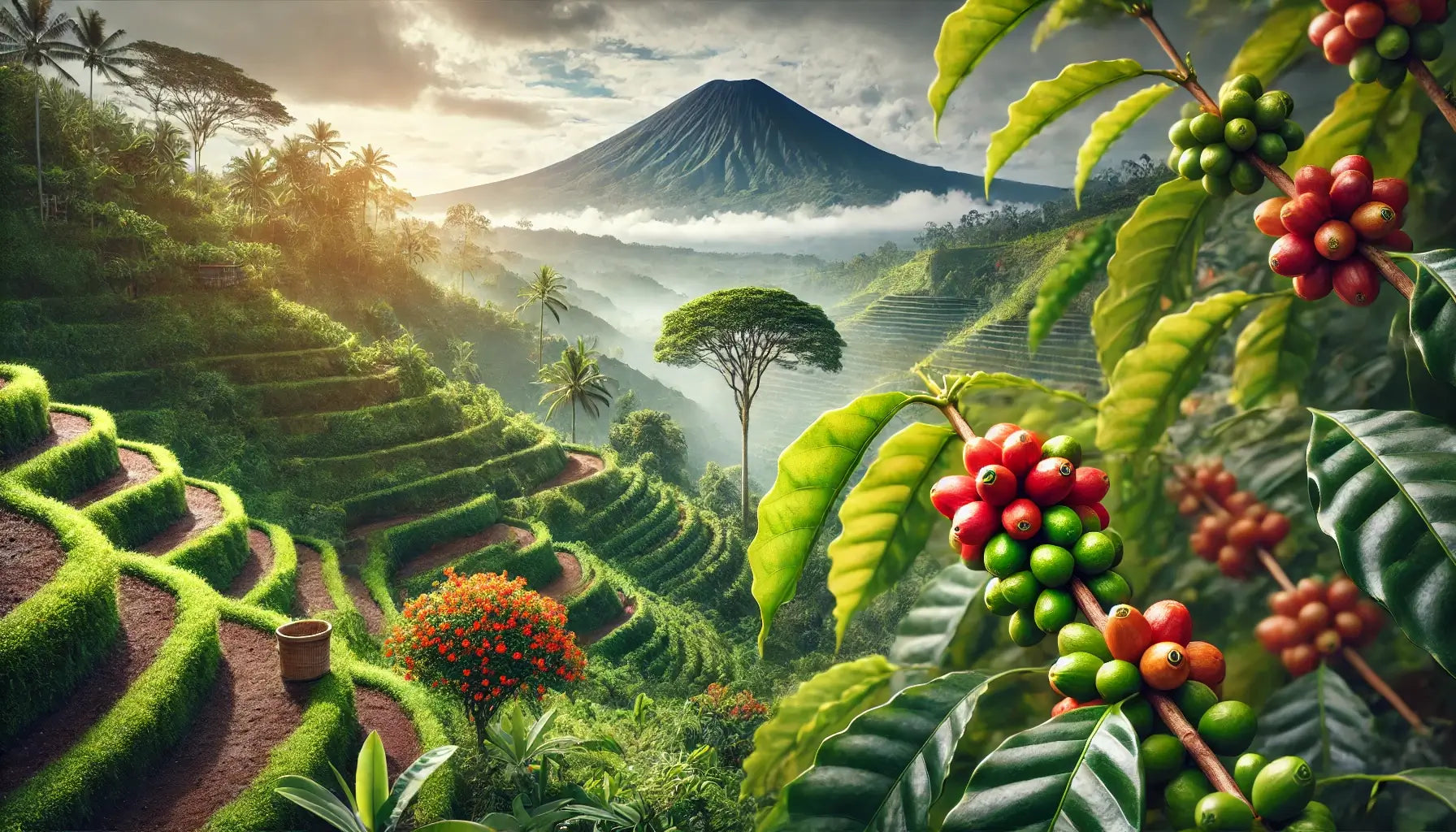Bali’s reputation as a paradise extends far beyond its white sand beaches and terraced rice paddies—it’s also home to some of the finest coffee in the world. One name that stands out in specialty coffee circles is Bali Blue Moon, a uniquely smooth, full-bodied brew cultivated in the highlands of Kintamani. If you’ve been searching for a Bali coffee bean that offers a complex, vibrant flavor profile rooted in rich tradition, this is the one to explore.
But what makes Bali Blue Moon coffee so exceptional? It’s not just the altitude, the soil, or the processing methods—it’s the entire ecosystem of history, culture, and meticulous craftsmanship that elevates it to a class of its own. Let’s break it down.
A Brief History of Kintamani Coffee Production
The story of coffee in Bali starts with colonialism. The Dutch first introduced coffee to Indonesia in the 1600s, smuggling Arabica seeds out of Yemen and planting them across their empire. While Java and Sumatra were early production hubs, Bali’s coffee industry remained small and localized for much of its history.
It wasn’t until the early 20th century that Balinese farmers, particularly in the Kintamani Highlands, began to cultivate coffee more extensively. Unlike the large colonial plantations of Java, Balinese coffee farming was (and still is) based on the Subak Abian system—a traditional Hindu cooperative that emphasizes harmony between farmers, nature, and the spiritual world. This cooperative approach ensures sustainable, high-quality cultivation practices that have persisted for generations.
Why Kintamani’s Unique Environment Produces Superior Coffee
The Kintamani Highlands sit at 4,500 to 5,500 feet above sea level, a prime elevation for growing Arabica coffee. But altitude alone doesn’t make great coffee—it’s the combination of factors that sets Bali Blue Moon apart:
1. Volcanic Soil & Perfect Climate
Bali’s coffee thrives in the mineral-rich volcanic soil surrounding Mount Agung, the island’s highest peak. This soil is packed with essential nutrients that fuel slow, even coffee bean development, resulting in a depth of flavor rarely found elsewhere.
The climate is equally ideal: cool temperatures and high humidity allow for slow cherry maturation, enhancing natural sugars and acidity balance. Unlike mass-produced, sun-scorched coffee, Balinese beans develop intricate flavor notes through patience and precision.
2. Shade-Grown Cultivation
Balinese farmers integrate coffee plants with citrus trees—primarily orange and tangerine groves. This not only protects coffee from excessive sun exposure but also influences the final cup profile with delicate citrus undertones.
3. Organic, Chemical-Free Farming
Bali Blue Moon coffee is organically grown without synthetic fertilizers or pesticides. Balinese Hindu traditions emphasize balance with nature, making organic farming second nature rather than a marketing afterthought.
The Unique Processing Methods of Bali Blue Moon Coffee
One of the most defining features of Bali Blue Moon is how it’s processed. Unlike mass-market coffee that prioritizes speed over flavor, Balinese farmers take their time—employing methods that retain complexity while enhancing sweetness and body.
1. Wet-Hulled (Giling Basah) Processing
Bali, like other Indonesian islands, uses a traditional method called Giling Basah, or wet-hulled processing. Here’s how it works:
-Farmers handpick only the ripest cherries, ensuring uniform quality.
-The cherries are pulped, removing the outer skin, and left to ferment overnight in small batches.
-Unlike washed coffee, which is dried with the mucilage fully removed, Bali’s beans retain some mucilage during drying, resulting in a heavier body and richer mouthfeel.
-The beans are then hulled while still wet, a practice unique to Indonesia, giving the coffee its signature syrupy, almost creamy texture.
2. Sun-Dried for Flavor Concentration
After wet-hulling, beans are sun-dried on raised beds, allowing for slow moisture reduction. This method prevents harsh fermentation, preserving the bright, citrusy high notes that make Bali Blue Moon coffee stand out.
What Does Bali Blue Moon Taste Like?
Now, let’s talk flavor. If you’re tired of bitter, one-dimensional coffee, Bali Blue Moon is a revelation. Thanks to its high-altitude growing conditions, volcanic soil, and meticulous processing, it delivers an incredibly balanced and nuanced cup.
Tasting Notes:
-Body: Full, velvety smooth
-Acidity: Bright but balanced (think citrus without overpowering sharpness)
-Flavor Profile: Dark chocolate, brown sugar, and vanilla with hints of tropical fruit and orange zest
-Finish: Clean and lingering with a subtle spice note
This isn’t your typical mass-market coffee. It’s rich, naturally sweet, and complex, making it perfect for espresso, French press, or even cold brew.
Why Bali Blue Moon is a Must-Try for Specialty Coffee Lovers
If you’re serious about high-quality coffee, Bali Blue Moon is a no-brainer. Here’s why it deserves a spot in your rotation:
Single-Origin Purity – Unlike blended supermarket coffee, Bali Blue Moon offers a consistent, traceable flavor from one of the most pristine coffee-growing regions in the world.
Sustainably & Ethically Sourced – Smallholder farmers, traditional methods, and a commitment to the land ensure responsible coffee production.
Flavor Complexity – Thanks to the wet-hulled process and volcanic soil, this coffee delivers an experience that evolves with every sip.
Final Thoughts: A Cup Worth Savoring
Bali Blue Moon coffee isn’t just about caffeine—it’s a testament to centuries of tradition, a perfect climate, and the dedication of Balinese farmers who treat coffee like an art form. From its shade-grown cultivation to wet-hulled processing and bright, chocolatey flavor, this is a coffee that rewards those who appreciate depth and craftsmanship.
So if you’re looking to elevate your coffee game, grab a bag of Bali Blue Moon coffee beans and experience the magic of Kintamani’s highland farms—one cup at a time.


Share and get 15% off!
Simply share this product on one of the following social networks and you will unlock 15% off!